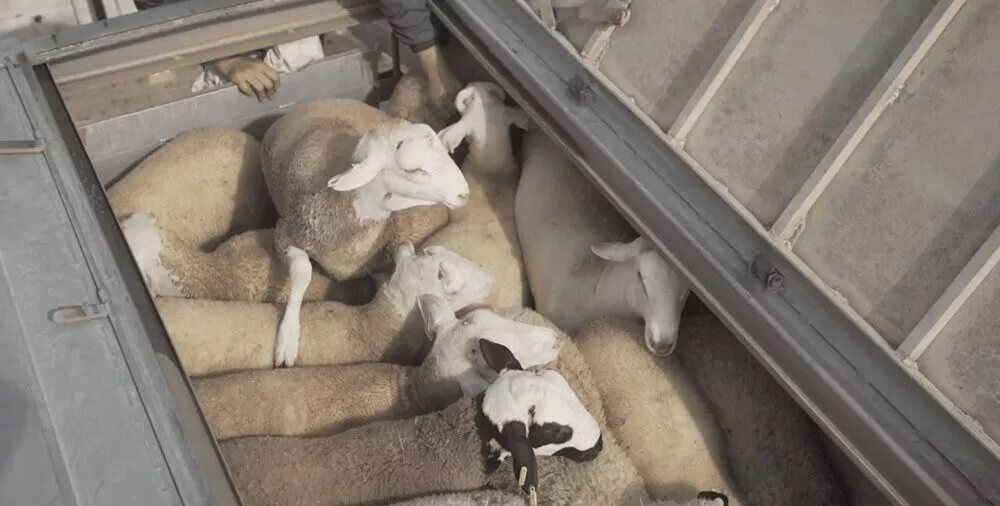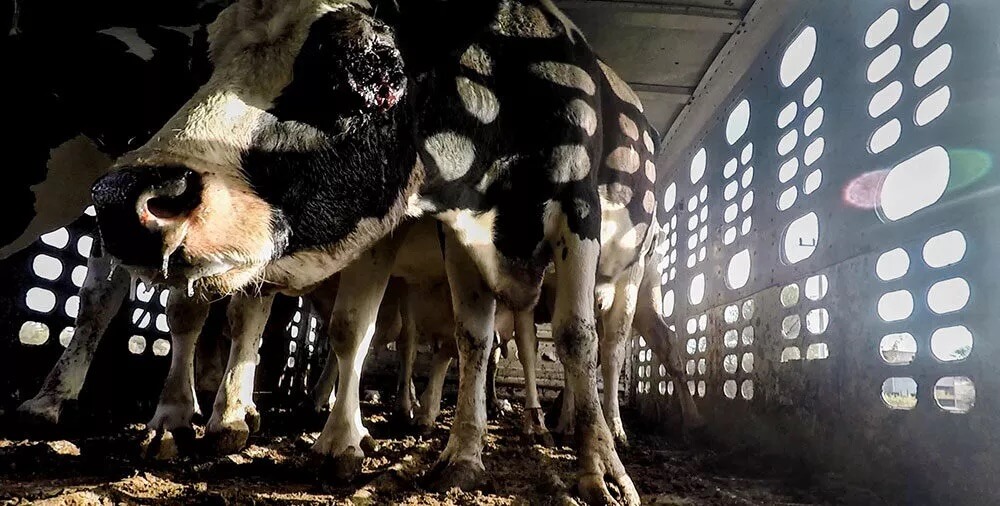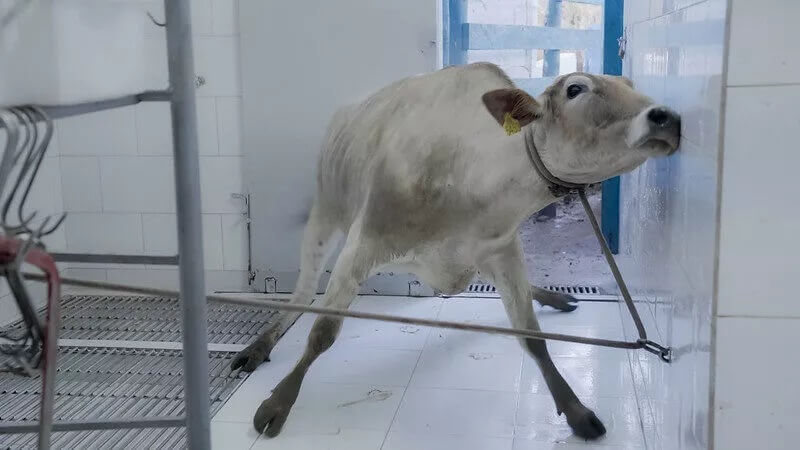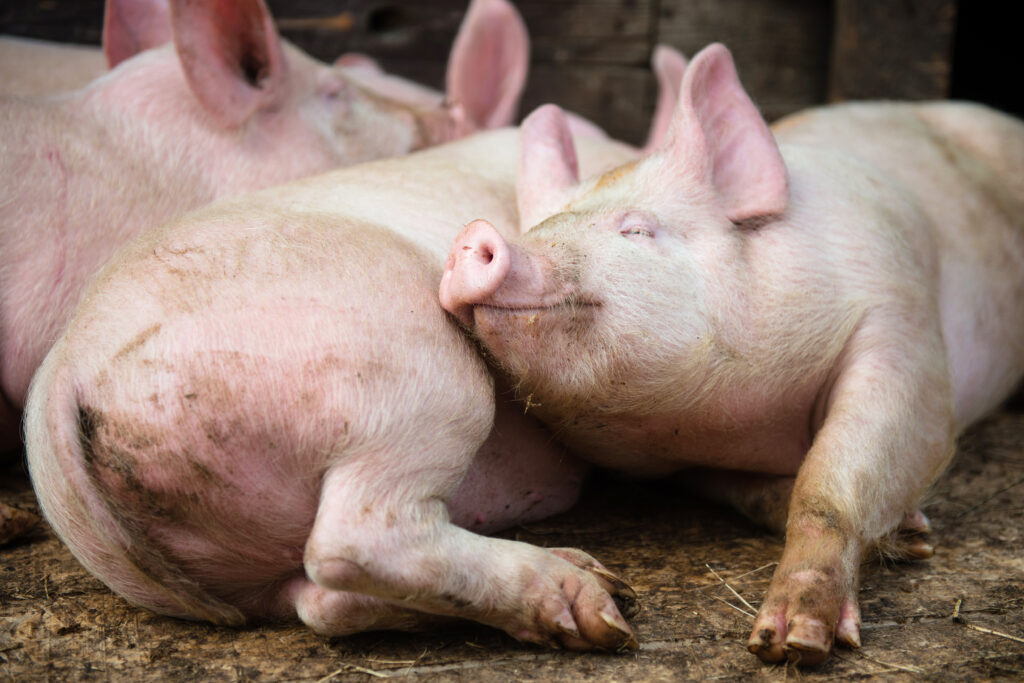

Five Facts About Live Animal Transport
Each year, billions of animals worldwide are condemned to lives of suffering and confinement on factory farms, stripped of their autonomy and subjected to unimaginable cruelty. As if their anguish wasn’t already unbearable, they must also endure one final harrowing ordeal before their lives are brought to a brutal end: live transport.
Here are five key facts into the painful journeys animals face en route to slaughterhouses:
1. Many animals are younger than a year old
Fearful and disoriented, young animals are forced to travel thousands of miles to be killed in other countries. Many are transported from the European Union – where minimal protections are in place – to countries with even more lenient animal protection laws.

2. Workers have been found to hit, kick, drag, and electrocute animals
Animal Equality’s exposés have uncovered young animals being thrown, hit, kicked, and dragged onto transportation trucks, often coaxed with electric prods. In many cases, animals are transported to seaports and loaded onto ships even when they are too injured or sick to survive the overseas journey.

3. Animals travel for days or weeks before slaughter
Animals transported overseas are held in old ships that are ill-equipped for their purpose. Temperatures are often unregulated, and excrement covers the ships’ floors.
In Animal Equality’s investigation into the transportation of lambs from Spain across the Mediterranean Sea, our footage vividly captures the plight of these sensitive animals, all under a year old, as they are crammed into trucks and subjected to hours and sometimes days or even weeks of travel. They are treated as nothing more than cargo.

4. Death rates are high during live transport
Due to extreme conditions during transport, millions of animals die from dehydration, extreme stress, starvation, injury, or illness every year.
In the case of live transport from Europe, animals who die before reaching their destinations are commonly thrown off ships and into the sea. While this practice is prohibited, dead animals often wash up on European shores, their tags removed so they can no longer be identified by authorities, and criminals cannot be reported.

5. Animals are slaughtered after reaching their destination
After reaching their destination, workers push exhausted or injured animals off the trucks and herd them into slaughterhouses. Inside the slaughterhouse, stunning equipment can fail, leaving animals conscious as their throats are painfully slit. Animal Equality’s investigations have even found animals skinned and carved alive.
Some animals shipped from Europe to the Middle East fall into the water as they attempt to escape. Those who are rescued are still sent to slaughterhouses, where they are often slowly bled to death while conscious.

Live transport in England and Wales
Although England and Wales have initiated a legal ban on live animal exports – which is in the process of soon becoming law – we still continue to import animals from other countries, supporting ongoing mistreatment elsewhere.
And, it’s not just import and export that we should be concerned about. Transportation of animals around the UK is happening all the time and is extremely cruel too. This is because farmed animals are bred and ‘fattened’ on farms first before being taken by lorries and trucks to separate slaughterhouses. The gruelling journeys can last for hours.
Animal welfare laws during transport exist, however, in 2020 6466 complaints were submitted to local authorities across the UK relating to farmed animal welfare and over a third of these were in relation to transport and border control.
You can stop animal transport cruelty
The bottom line is that any transport of farmed animals is cruel. To put an end to this cruelty, the most effective action you can take is to stop consuming animals. By transitioning to plant-based alternatives, you’ll prevent countless animals from enduring suffering on farms, during transportation, and at slaughter.
Need a little nudge or inspiration to embark on your plant-based journey? Look no further! We offer a plethora of recipe tips and tricks to kickstart your path to a more compassionate lifestyle:

START YOUR PLANT-BASED JOURNEY TODAY!
Farmed animals have rich emotional lives and unbreakable family bonds. They deserve our protection. You can help build a better future for animals by starting your plant-based journey today!
Recommended




